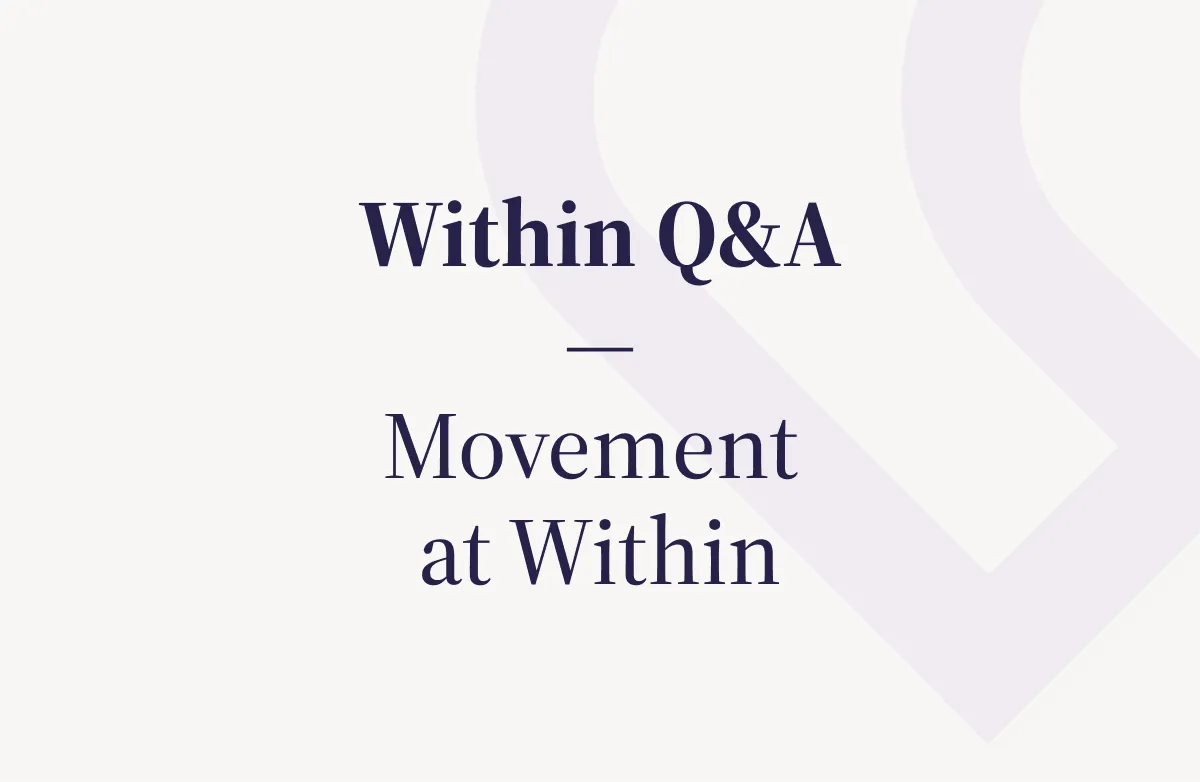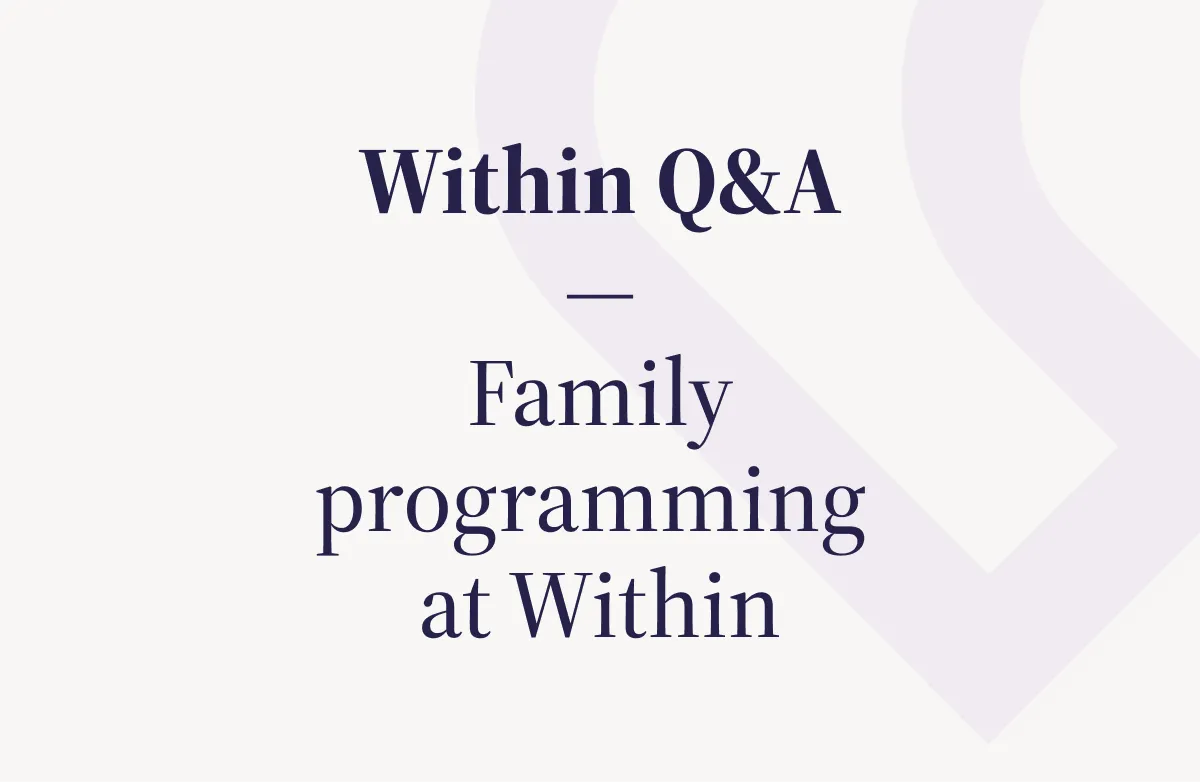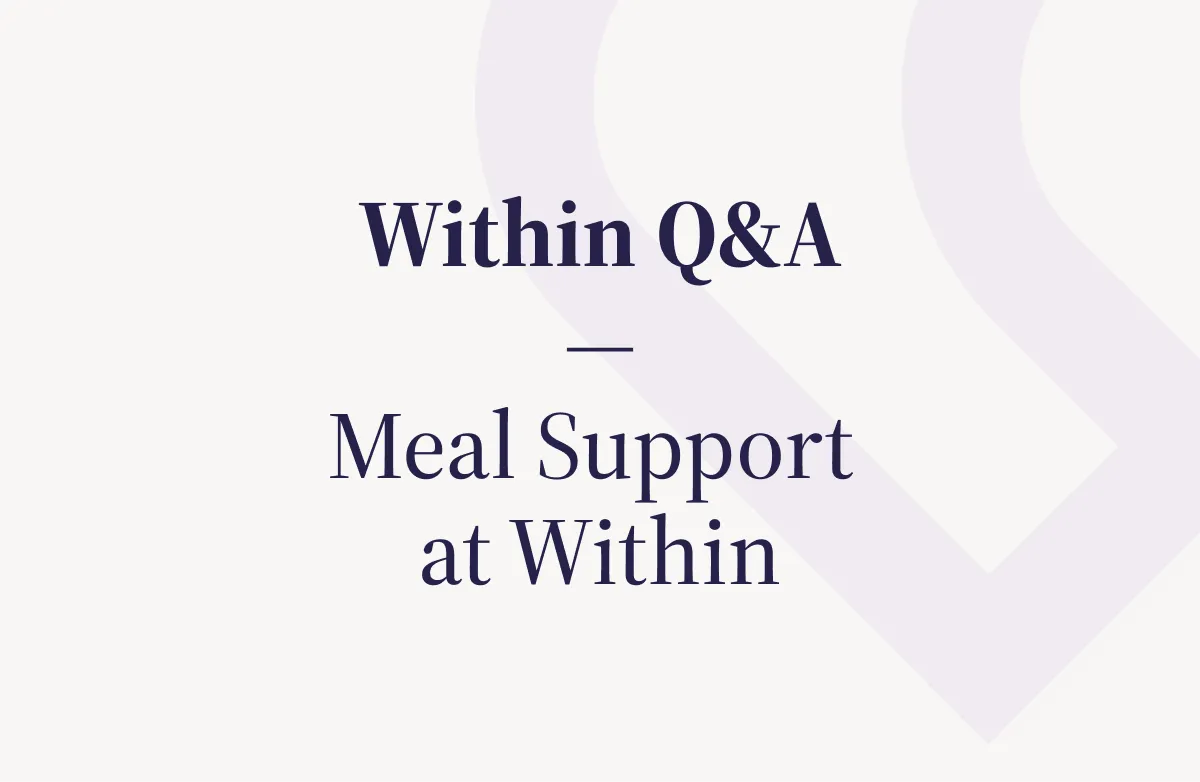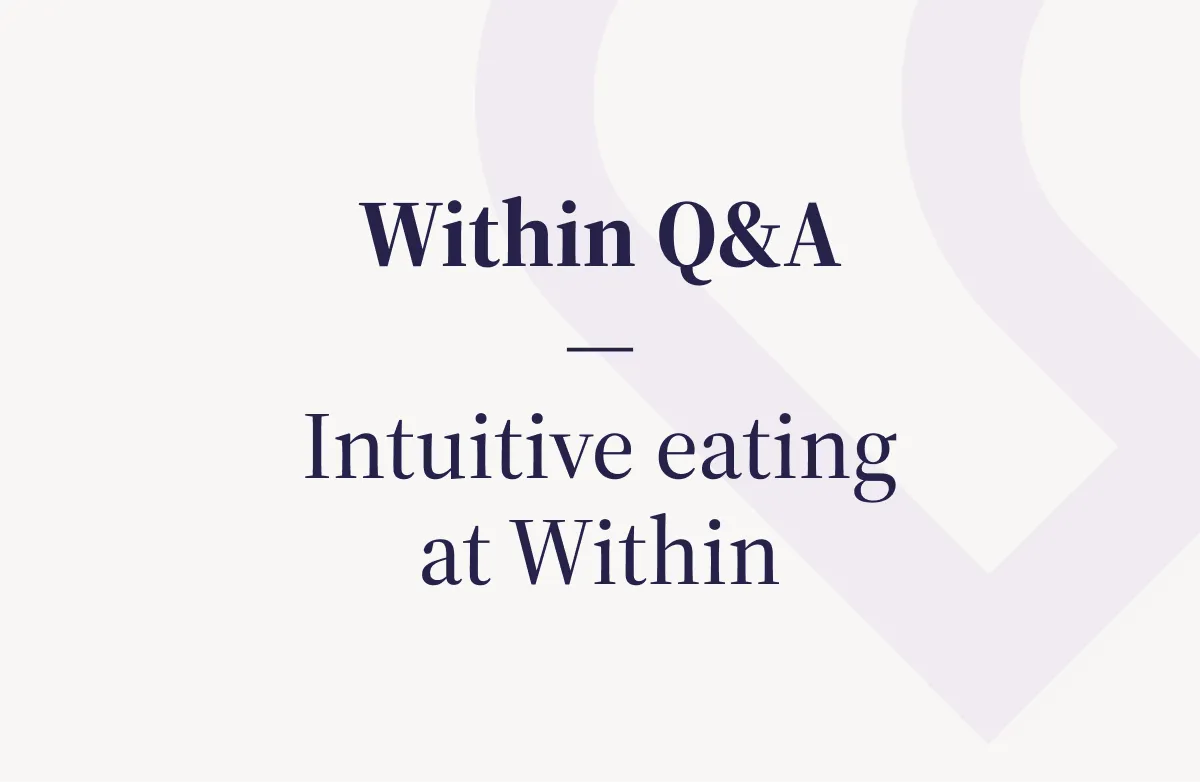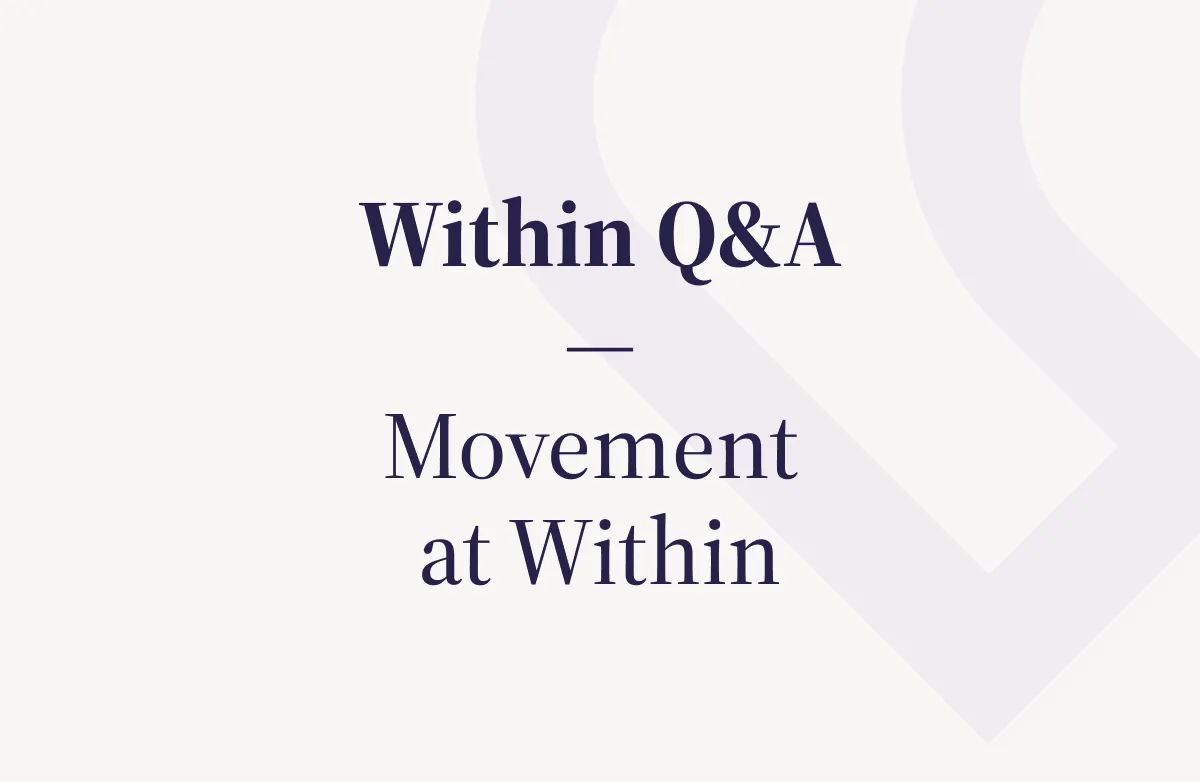Q: What are the benefits of movement when recovering from an eating disorder?
There are health benefits of movement both physically (cardiovascular stamina, hormone balance, bone strength) and psychologically (improved depression, stress management) for everyone, including those in recovery from an eating disorder.
Improvements in weight restoration (as clinically indicated), fitness markers, self-esteem, body image, and eating pathology are some of the benefits of including movement as part of an eating disorder treatment program. Additionally, there is evidence that movement in conjunction with treatment can decrease anxiety, a drive for thinness, depression, and disordered exercise patterns.
Q: What kind of movement is taught at Within?
Within currently offers three broad categories of movement. All levels of movement utilize the talk test as a method to assess intensity level. Our first category is intended for those re-introducing movement and focuses on mindful forms of movement, for example:
- Breath and Stretch
- Chair Yoga
- Meditation Group
- Movement Psychoeducation and Process Group
As patients are clinically appropriate, they may explore more variety in movement types that could include Pilates, Strength Training, and Yoga Flow. These groups typically include 25-30 minutes of supported movement with a check-in at the beginning, during, and after. Instructors are trauma-informed and utilize invitation language so patients can explore what feels best for them.
Once patients exhibit progress, they have the opportunity to practice movement on their own (i.e., without support from instructors) under the direction of individualized plans co-created with their dietitian.
Q: How can people incorporate movement into their daily lives post-treatment?
Movement is so variable, and there are a number of ways people can incorporate movement into their lifestyle. The first consideration is to stay connected to your sense of self and ensure that movement is something you authentically desire to engage in.
Factors affecting how much movement is possible include finances, time, nutritional intake, and access. Many of us have considered movement as a narrow offering, for example, going to the gym. However, remember that movement is anything that utilizes your body's energy. This can look different for anyone and can be informal, such as walking to get your mail, unloading groceries, or catching up with a friend for a walk.
There are different types of movement (often referred to as strength, cardiovascular/endurance, balance, flexibility). Because they all have value for the body, exploring a variety of movement options could be helpful. Variety and mindfulness are important for sustainability.
Q: What is mindful movement?
The book Intuitive Eating by Evelyn Tribole, MS, RDN, CEDRD-S, and Elyse Resch, MS, RDN, CEDRD-S, FAND, has a great definition of mindful movement and what to consider when exploring it. They say that mindful movement:
- Is used to rejuvenate the body, not exhaust or deplete it
- Enhances the mind-body connection and coordination rather than confusing or dysregulating the mind-body relationship
- Alleviates mental and physical stress instead of contributing to and exacerbating stress
- Provides genuine enjoyment and pleasure and is not something that causes pain or is dreaded
Q: What if someone isn’t motivated to move? What are some strategies to encourage movement?
It is important to remember that there is no obligation to engage in a movement practice. It may not be realistic for this season, or you may have other barriers to engaging in movement. It can be worth exploring what feels like something you desire to engage in rather than something that feels like you “should” do and carry shame and guilt.
Movement can be a normal part of life (e.g., tending to our home or family, walking to work). If we find ourselves avoiding most forms of movement, we want to be curious about this. Avoidance can be part of the eating disorder, and taking the time to understand how the eating disorder can be interwoven with movement is important.
If you feel movement is not part of the eating disorder or you’re in a place where you are repairing your relationship with movement, it may be helpful to begin exploring movement that you did in childhood. For example, maybe you played soccer as a child and loved it. Is it possible to find an adult recreational league?
Another idea is to create a movement bucket list, including types you have found yourself thinking, “That looks fun/interesting,” and find a buddy to explore something new. Give yourself permission to not be an expert but to try things with an open and curious mind. Have realistic expectations and pace back into movement slowly, paying attention to how it feels physically, mentally, and emotionally.


